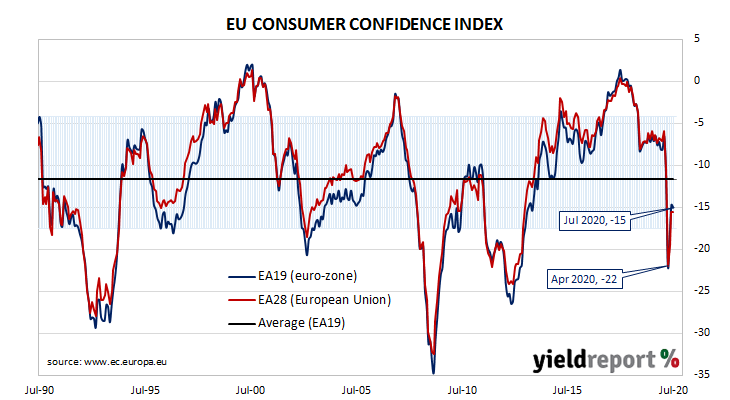Summary: European Union households slightly more pessimistic in July; confidence index lower than in June, below consensus expectation; significantly below long-term average; euro-zone bond yields a touch higher.
EU consumer confidence plunged during the GFC and again in 2011/12 during the European debt crisis. Since early 2014, it has been at average or above-average levels, rising to a cyclical peak at the beginning of 2018. Even after it dropped back significantly in late 2018, the index remained at a level which corresponds to significant optimism among households until a substantial drop took place in April 2020. The latest reading indicates households remained somewhat pessimistic.
The July survey conducted by the European Commission indicated its Consumer Confidence index had slipped back to -15.0 after making a recovery through May and June. The figure was below the -12.3 which had been expected and less than June’s final figure of -14.7. The average reading since the beginning of 1985 has been -11.6.
The report had a minor effect on major European bond markets. By the end of the day, German and French 10-year bonds had each ticked up 1bp to -0.48% and -0.18% respectively.

